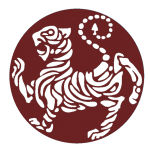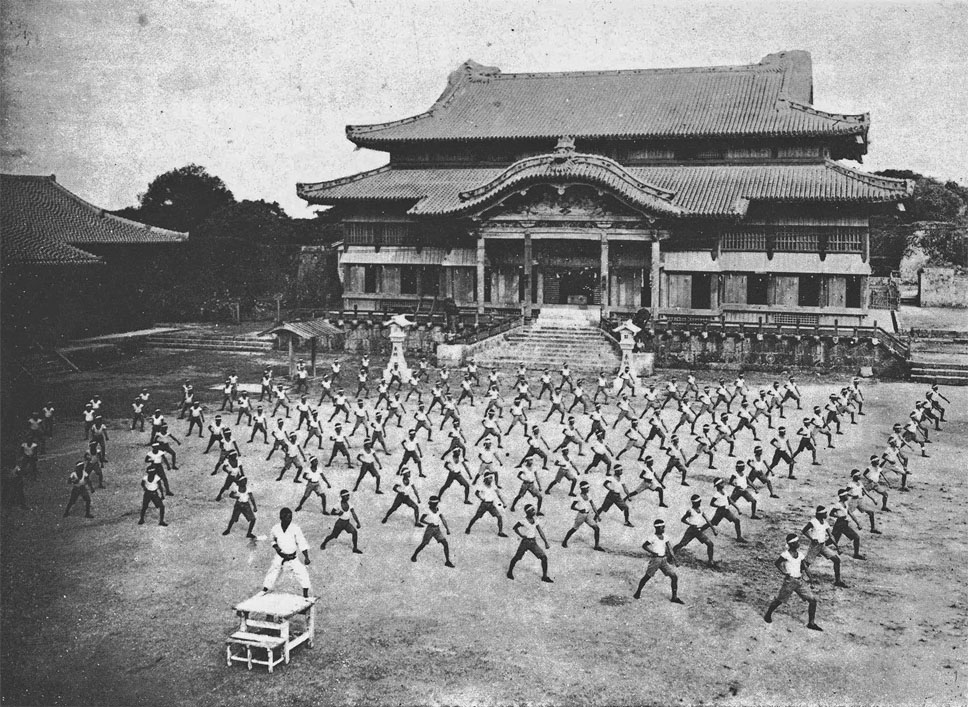
Although karate is regarded as a Japanese martial art, it can be traced back via Okinawa to China and India, some even think some of the principles may have originated in Greece in an ancient art known as Pankration. However Karate as we know it today is accepted as being born in Okinawa with Chinese influences. Two way trade was established between Okinawa and China, and this enabled Okinawan martial artists from the villages of Shuri, Naha and Tomari to visit China, and Chinese settlements were set up in these villages. The indigenous fighting arts of Okinawa were subequently refined by the Chinese martial arts, particularly the White Crane style from Fukien. These three villages developed three martial art styles known as Shuri-te, Naha-te and Tomari-te. The karate we teach today has influences of all three original styles, but is primarily Shuri-te which has evolved into the Shotokan style.
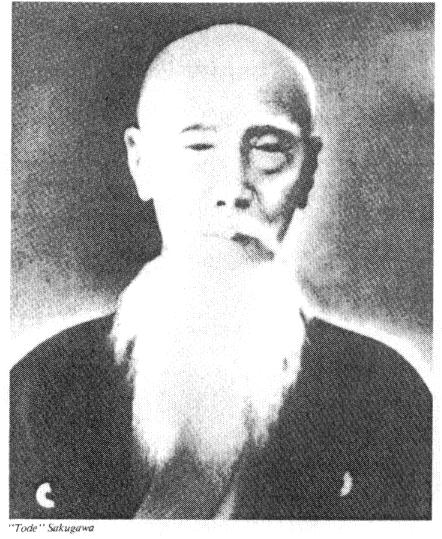
“Tode” Sakugawa Satunushi (1733-1815) is the first teacher in the Shotokan lineage who made specific contributions to our karate based on white crane chuan fa. He was taught by a Buddhist monk, Peichin Takahara who was an expert in tode (Chinese hand), the Okinawan version of chuan fa. Sakugawa was taught grappling techniques by Kong Su Kung (Kusanku in Okinawan). He is credited with creating the dojo system and the first dojo kun.
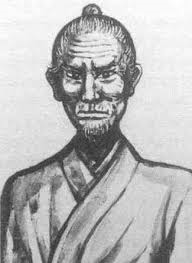
Sakugawa taught “Bushi” Matsumura Sokon (1796-1893), who became chief of security to the Okinawan royal family in Shuri. He is rumoured to have created the Bassai kata and the linear high impact techniques we employ in Shotokan today. Matsumura also made a pilgimmage to the Shaolin Temple in China and allegedly brought back early forms of Tekki, Hangetsu and Gojushiho among others. He also apparently created Gankaku. The kata passed down by Matsumura formed the core of Shotokan.
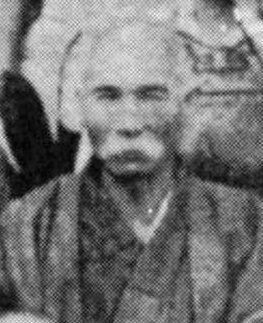
Next we come to Itosu Anko (1830-1915) who studied under Matsumura as an apprentice bodyguard and served as personal secretary to the Okinawan King. He is credited with forming the 5 Heian kata, possibly with the expansion of Tekki into 3 forms, standardised Bassai, Kanku and Gojushiho into Dai and Sho forms, introduced Chinte and created Rohai which Funakoshi translated into Meikyo. Empi which dates from 1683 is also usually traced through Itosu who appears to have standardised all the old kata using Matsumura’s linear high impact techniques. Karate was taught in secret at night and Funakoshi Gichen was one of his students, but around 1901 Itosu obtained permission to teach karate in schools and it stepped out into the daylight.
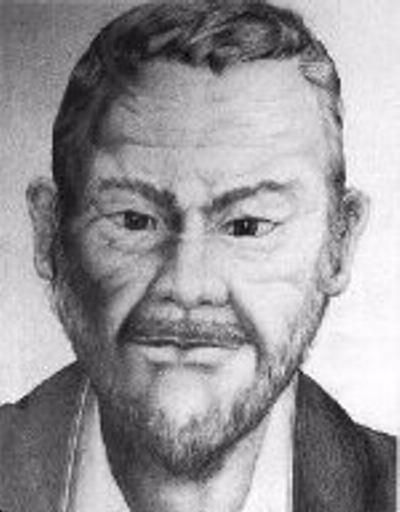
Funakoshi Gichen(1868-1957)’s first teacher was Azato Anko (1828-1906), a close friend of Itosu. However, although Funakoshi called him the greatest karate master he ever met, very little is known about him apart from the fact that he was also taught by Matsumura, and was an advisor to the king. He was also a scholar and was responsible for educating Funakoshi to the extent that he passed the tests for becoming a schoolteacher.
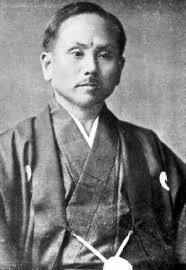
Given Funakoshi’s profession of being a schoolteacher and Itosu getting permission to teach karate in schools, Funakoshi was the ideal candidate to take on Itosu’s mantle and spread the teaching of karate. The first formal demonstration of the art was performed by Funakoshi in 1902 for the Commissioner for Schools for Kagoshima Prefecture. This was followed by the first public exhibition of karate in 1906 and a tour of Okinawa by a number of contemporary masters during 1914-1915. In 1917 Funakoshi travelled to Kyoto and demonstrated karate for the first time on the Japanese mainland at the Butokuden. It was not until a demonstration in the Great Hall of Shuri Castle for the Crown Prince (later to become the Emperor Hirohito) when he travelled to Okinawa on his way to Europe , that karate gained positive approval by the Japanese. Funakoshi formally introduced karate to the Japanese people in 1922 in Tokyo.
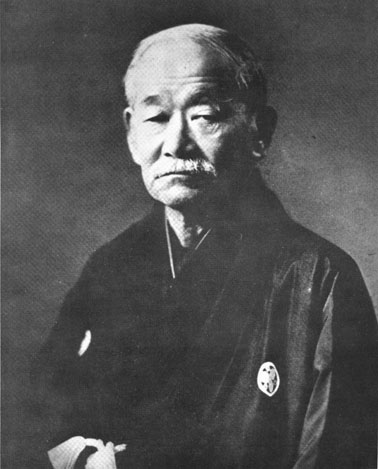
With the support of Kano Jigoro the founder of modern Judo and Nakayama Hakudo the founder of modern Iaido, Funakoshi assiduously promoted Karate and demonstrated for the Imperial Household in 1928. Karate then grew rapidly in the Universities. Following the Second World War Funakoshi embarked on a rebuilding project for karate which resulted in the establishment of the Japan Karate Association in 1949. Unfortunately following Funakoshi’s death the Shotokan split into Shotokan and Shotokai, with Nakayama Masatoshi (1913-1987) leading the JKA Shotokan.
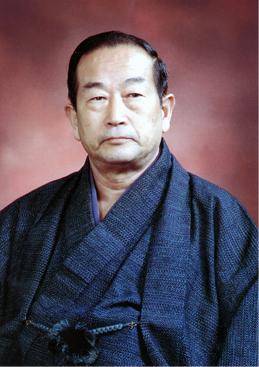
Nakayama’s contribution to Shotokan was the research into body dynamics and power generation. Nakayama was responsible for sending top Japanese karate teachers around the world to further spread this fascinating martial art. Following Nakayama’s death Shotokan underwent many more splits and schisms. However all legitimate branches of Shotokan adhere to the guiding principles of Funakoshi Gichen, who is regarded as the ‘father of modern karate’.
With grateful thanks to those dedicated martial artists who devoted their time and energy to researching karate’s history.
References
Sells, John. Unante – The Secrets of Karate. Panchita S Hawley. ISBN 0-910704-96-1
Hassell, Randal G. Shotokan Karate. It’s History and Evolution. Empire Books. ISBN 1-933901-28-4
Clayton, Bruce D. Shotokan’s Secret. The Hidden Truth behind Karate’s Fighting Origins. Black Belt Books/Ohara Publications Inc. ISBN 0-89750-144-6
Nakayama, Masatoshi. Dynamic Karate. Ward Lock Limited. ISBN 0-7063-1714-9
